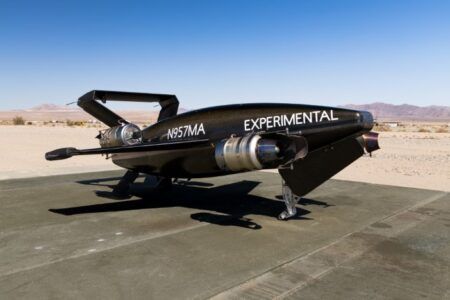https://www.youtube.com/watch?time_continue=43&v=RNYCCbCpAlM
A drone developed by researchers at the University of Maryland in the USA has delivered a donor kidney to surgeons for successful transplantation into a patient with kidney failure for the first time.
The kidney was delivered to surgeons at the University of Maryland Medical Center in Baltimore. The recipient was a 44-year-old woman from Baltimore, who spent eight years on dialysis before undergoing the transplant procedure.
Albert Reece, executive vice president for medical affairs at the University of Maryland, Baltimore, said, “This major advance in human medicine and transplantation exemplifies two key components of our mission: innovation and collaboration.
“Innovation is at the heart of our focus on accelerating the pace and scope of discovery, where research can rapidly transform medicine. At the same time, collaboration is the key to our success in providing discovery-based medicine – both in conducting research and in delivering the highest quality patient care.”
Maryland faculty and researchers believe the prototype organ transport blazes a trail for the use of drones to deliver donated organs, improving outcomes for more people in need of organ transplants.
Researchers have developed a number of parts of the drone organ delivery system bespoke, including: an apparatus for maintaining and monitoring a viable human organ; a custom-built drone with eight rotors and multiple powertrains to ensure consistently reliable performance, even in the case of a possible component failure; the use of a wireless mesh network to control the drone, monitor aircraft status, and provide communications for the ground crew at multiple locations, and aircraft operating systems that combined best practices from both drone and organ transport standards.
Matthew Scassero, director of the University of Maryland’s UAS (unmanned aerial systems) Test Site, which is part of the A. James Clark School of Engineering, said, “We had to create a new system that was still within the regulatory structure of the FAA, but also capable of carrying the additional weight of the organ, cameras, and organ tracking, communications, and safety systems over an urban, densely populated area— for a longer distance and with more endurance.
“There’s a tremendous amount of pressure knowing there’s a person waiting for that organ, but it’s also a privilege to be a part of this critical mission.”
Prior to the most recent organ delivery flight, the researchers developed and tested the drone by transporting saline, blood tubes, and other materials, and then by transporting a healthy, but non-viable, human kidney.
Organ transportation
Transportation logistics are often the most complicated part of the organ transplant process and how long an organ remains viable throughout travel is a major issue. Transport methods typically involve expensive chartered flights or rely on variable commercial flights, and occasionally result in an organ left on a plane or other delays that destroy the organ’s viability.
According to the United Network for Organ Sharing, which manages the organ transplant system in the United States, in 2018 there were nearly 114,000 people on waiting lists for an organ transplant; about 1.5% of deceased donor organ shipments did not make it to the intended destination; and nearly 4% of organ shipments had an unanticipated delay of two or more hours.
“There remains a woeful disparity between the number of recipients on the organ transplant waiting list and the total number of transplantable organs. This new technology has the potential to help widen the donor organ pool and access to transplantation,” said Scalea. “Delivering an organ from a donor to a patient is a sacred duty with many moving parts. It is critical that we find ways of doing this better.”
Designing a drone organ delivery system
To create a drone designed to carry an organ and provide real-time monitoring of its condition, Scalea has partnered with several medical technology companies to design and develop the Human Organ Monitoring and Quality Assurance Apparatus for Long-Distance Travel (HOMAL). This device measures and maintains temperature, barometric pressure, altitude, vibration, and location during transportation and transmits the information to the smartphones of transplant personnel.
The unmanned aircraft and operating systems for the project were designed by University of Maryland UAS Test Site engineers to meet the medical, technical, and regulatory demands of carrying a donor organ for human transplantation.
“We built in a lot of redundancies, because we want to do everything possible to protect the payload,” said Anthony Pucciarella, director of operations at the UAS Test Site. These safeguards included backup propellers and motors, dual batteries, a backup power distribution board, and a parachute recovery system.
Darryll Pines, dean of the A. James Clark School of Engineering and Nariman Farvardin professor of aerospace engineering said, “This history-making flight not only represents a breakthrough from a technological point of view, but provides an exemplary demonstration of how engineering expertise and ingenuity ultimately serve human needs – in this case, the need to improve the reliability and efficiency of organ delivery to hospitals conducting transplant surgery.
“As astonishing as this breakthrough is from a purely engineering point of view, there’s a larger purpose at stake. It’s ultimately not about the technology, it’s about enhancing human life.”




